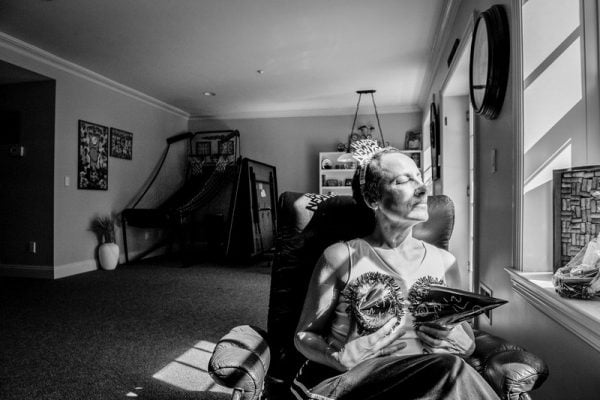As a kid, Nancy Borowick was fascinated with other people’s lives. While most children were absorbed in their own bounded worlds, she was looking outward; watching, asking questions.
“I always loved getting to know people,” the 33-year-old American told Mamamia. “You know and when kids are young and their parents say ‘Don’t talk to strangers’, I was that child talking to strangers. I couldn’t stop myself. I was so curious.”
Photography was a natural extension of that curiosity, a legitimised way to invite herself into the homes and lives of people she barely knew.
But in 2013 she found herself turning her camera on those she knew most deeply – her parents. Howie and Laurel had both been diagnosed with stage four terminal cancer. The pancreatic cancer was a first for her father, but it was the third occurrence of her mother’s breast cancer.
Married 34 years, suddenly their future was confined to months.




